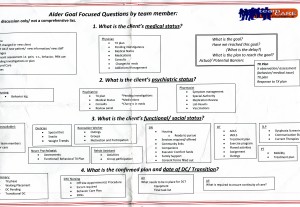Something that has been troubling me is the low number of members I often see at Headway. Last week when I was volunteering, there were even more volunteers than members! I wonder if this is something you’ve noticed too.

Why are there so little members visiting? (Image via Flickr by Tim Samoff)
When I was a volunteer last summer, it seemed like there were more members. Perhaps this has something to do with seasonal affective disorder (SAD), as Jazon described during his facilitation on emotional outcomes. Maybe less sunlight during the winter leads to depressive symptoms and general fatigue that then makes it too much to go to Headway. After all, I hear members say they’re tired and have low energy all the time. To be honest, I even suspected they were using it as an excuse sometimes to not participate in activities. But I know now after our discussions on symptoms that I shouldn’t make this assumption.
Fatigue alone is unlikely to be causing the low number of members, according to a study by Cantor et al. (2008). The authors suggest that while post-TBI fatigue is associated with health-related quality of life, it is not related to participation in major life activities. Curiously, it was not made clear what counts as being a “major life activity”. Here’s an interesting legal briefing on how major life activities are interpreted in court.
Another explanation for the low number of members is just not enough people knowing about Headway. Especially after Alison’s convincing talk on how Headway can increase life satisfaction, I feel that Headway Vancouver is very underutilized. After speaking with the manager, I learned that reaching more potential members is a high priority. However, the Headway manager is newly hired and not from the Vancouver area. As such, she does not yet have many connections with the Vancouver health care community.
I think we have the capability to really help out here! From our undergraduate careers, we’ve likely networked with many health professionals and community workers. Whether through directed studies, co-ops, summer studentships, clubs, jobs or volunteer programs. Lets put together a resource with potential contacts that may be able to refer their patients/clients/members. I’ll start a document on Google drive next week so we can compile our connections together. This will count as bonus participation marks for your course grade. If you don’t personally know any contacts, another idea is to search online. Places like Vancouver General Hospital, St Paul’s Hospital, psychology/physiotherapy centers and private clinics are a good place to look.
I don’t expect new members to come pouring in by the time this semester ends. But if we manage to reach even a few individuals that can benefit from joining Headway, I think it’ll be worth our efforts. It’d be pretty cool to walk away from this experience leaving a lasting impact on a Center that has been so welcoming and generous with us.





